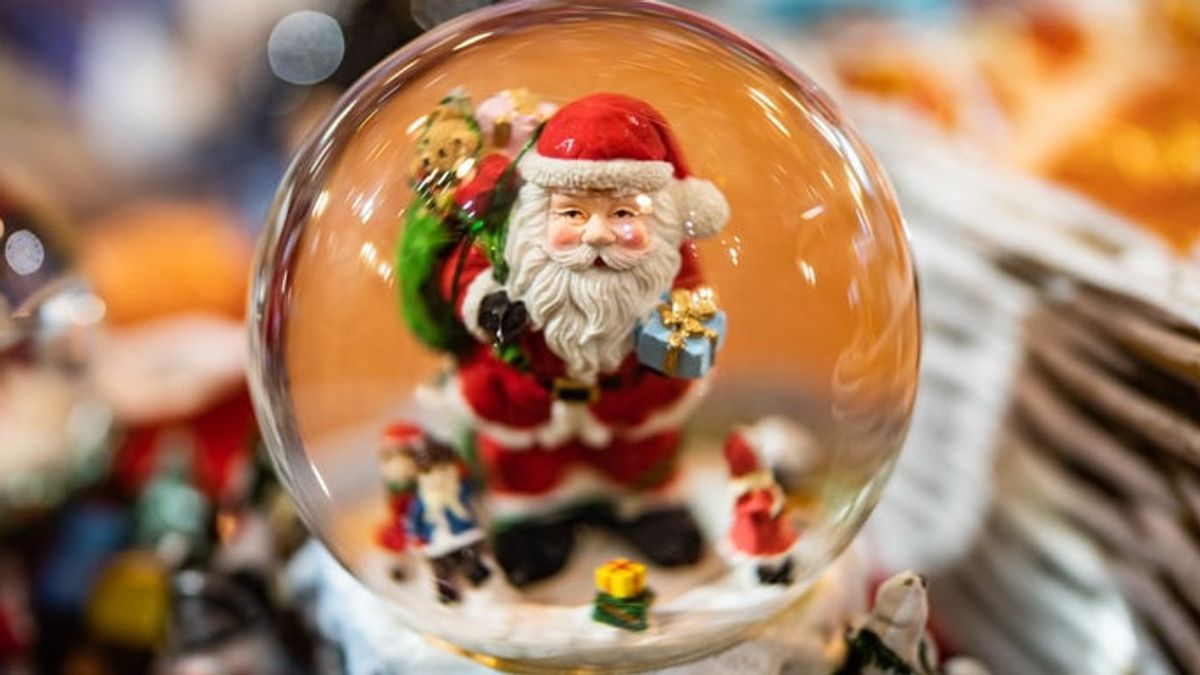JAKARTA - Besides the Christmas tree, Christmas celebrations also usually feature men with long beards and dressed in red. Yes, he is Santa Claus.
Santa Claus is known for giving gifts to children. But only good children will get gifts from Santa Claus.
Therefore, sometimes the story of Santa Claus giving gifts to good children becomes an inspiration for parents who advise their children to be kind.
Launching History, Friday, December 25, Santa Claus has a long history in the Christmas tradition. The story stretches all the way back to the 3rd century, when Saint Nicholas walked the earth and became the patron saint of children. Saint Nicholas was greatly admired for his piety and kindness. He continues to be the subject of many legends.
It is said that Saint Nicholas gave all the wealth of his inheritance and traveled to the countryside helping the poor and the sick. One of Saint Nicholas' most famous stories is when he saved three poor sisters who were about to be sold into slavery or prostitution by their father by giving them dowries so they could marry.
Over the years, Saint Nicholas' popularity spread and he was known as the protector of children. The day of his death is commemorated every 6 December. Traditionally, this was considered a lucky day for making large purchases or for getting married.
During the Renaissance, Saint Nicholas was the most popular saint in Europe. Even after the Protestant Reformation, when the cult of saints began to decline, Nicholas maintained a positive reputation, especially in the Netherlands.
Saint Nicholas made his first foray into American popular culture towards the end of the 18th century. In December 1773 and 1774, a newspaper in New York reported that a group of Dutch families had gathered to commemorate the day Saint Nicholas' death.
The name Santa Claus evolved from his Dutch nickname, Nick, to Santa Claus. Sinter Klaas stands for Sint Nikolaas (Dutch for Saint Nicholas). In 1804, John Pintard, a member of the New York Historical Society, distributed Saint Nicholas cuttings at the community's annual meeting. The sculptural backdrop contains the now famous image of a sock filled with toys and fruit hanging over the fireplace.
In 1809, Washington Irving helped popularize the story of Sinter Klaas when he called Saint Nicholas the patron saint of New York in his book, The History of New York. As his fame grew, Sinter Klaas was described as everything from a "bastard" in a blue three-pointed hat, red vest, and yellow stockings to a man wearing a wide brimmed hat.
Not Always AcceptedAlthough he is undoubtedly a good guy, Santa has stirred up and continues to create some controversy. In Russia, Santa Claus collides with Josef Stalin. Prior to the Russian Revolution, Grandpa Frost was a beloved Christmas character who had adopted Sinter Klaas traits in Holland.
"When the Soviet Union was formed, the communists abolished Christmas celebrations and gift-bearers," said University of Manitoba historian Gerry Bowler, who is also the author of Santa Claus: A Biography, quoted from National Geographic.
"In the 1930s, when Stalin needed to build support, he allowed Grandpa Frost's comeback not as a Christmas present but as a New Year's gift bearer," Bowler added.
Attempts to replace Christmas in Russia were ultimately unsuccessful, neither was to deploy a secular version of Grandpa Frost complete in a blue coat.
"Wherever they went after World War II, the Soviets tried to replace the original gift-bearers in places like Poland or Bulgaria," explains Bowler. "But the local people held back until the Soviet Union collapsed in 1989 and returned to their own traditions."
Santa Claus remains a politicized figure all over the world. American troops circulated their version of the jovial man around the world in the years following World War II. Santa Claus is greeted as a symbol of American generosity in rebuilding war-torn lands.
Sometimes Santa Claus is rejected because it doesn't come from the local culture. "In places like the Czech Republic, the Netherlands, Austria and Latin America, they all have very strong anti-Santa movements as they seek to preserve Christmas gift-bearers and their customs, and protect them from the Santa of North America," he concluded. Bawler.
The English, Chinese, Japanese, Arabic, and French versions are automatically generated by the AI. So there may still be inaccuracies in translating, please always see Indonesian as our main language. (system supported by DigitalSiber.id)









